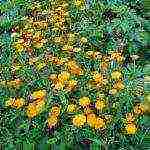Content
- 1 Correct planting of garlic outdoors in spring
Correct planting of garlic outdoors in spring
Garlic is a very healthy and popular crop that every gardener grows. The process of obtaining a rich harvest and planting in spring in open ground is quite simple, and even a beginner can cope with it, the main thing is to follow all the rules.
Recommendations regarding planting will be especially important, because the quantity and quality of the spicy heads obtained will depend on it.
With the help of step-by-step instructions, planting and growing heads of garlic in the country will not be difficult in the Moscow region, and in Belarus and even in Transbaikalia.
The correct timing of planting spring and winter garlic
Garlic can be planted in both autumn and spring. The specific term will depend from the selected variety.
Experienced gardeners know that such a crop can be represented by winter or spring varieties. These two species differ from each other not only in terms of planting, but also in many other characteristics. You can plant and transplant them at different times, the same applies to sowing seeds for seedlings.
To distinguish them from each other, you need to know the main external signs of each species:
- winter garlic is planted in the fall, it is larger, the lobules are covered with a hard shell. In the middle there is a thick and solid rod, around which the teeth are located;
- spring is placed in open ground in early spring... Such heads are smaller, their skin is soft and resembles parchment. The teeth are small, their arrangement is chaotic.
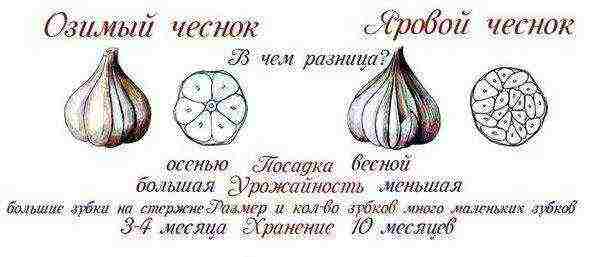
The specific dates of planting will depend on the climatic conditions of the region:
- When carrying out an autumn planting, it is worth remembering that by the time the first frosts appear at the beginning of winter, the teeth should have time to form a powerful root system, this process takes 3-4 weeks on average. Based on this, all work should be carried out a month before the onset of frost, that is late September-early October;
- Spring planting is carried out immediately after the winter snow cover melts, and the garden soil warms up to +6 degrees. Depending on the specific region, this may be April or early May.
Benefits of autumn and spring planting of heads
When making a choice at what time to plant garlic, you need to think about the fact that not only the process of work depends on this, but also characteristics of the resulting crophow it will emerge and whether it will be necessary to transplant in the summer.

| Winter garlic | Spring garlic |
| The taste of spring garlic is less intense, and the heads and cloves are small in size compared to winter varieties. | Winter garlic boasts large prongs that are easy to peel before cooking and have a bright, spicy flavor. |
| Spring garlic ripens for a long time, the yield of varieties of this type remains at a low level | Winter garlic ripens a month earlier than spring garlic, so you can use fresh tines already in summer, besides, the yield of this species is much higher |
| Spring garlic is able to maintain its freshness for up to 12 months | Winter garlic is only stored for 3-4 months |
| Spring planting guarantees a friendly emergence of seedlings and safe growth of plants | When carrying out an autumn planting, it should be borne in mind that there is always a risk of an earlier onset of frost or too much precipitation, which can destroy the planting. |
| When caring for spring garlic, you should take care of sufficient watering during the formation of the teeth. | Winter varieties are formed using soil moisture |
| Spring varieties of garlic are not afraid of common diseases and pests | Autumn varieties are the most defenseless against various ailments. |
The choice of planting dates and the type of vegetable grown will depend on the growing purpose. Experienced gardeners recommend planting in the beds both winter and spring crops plants.
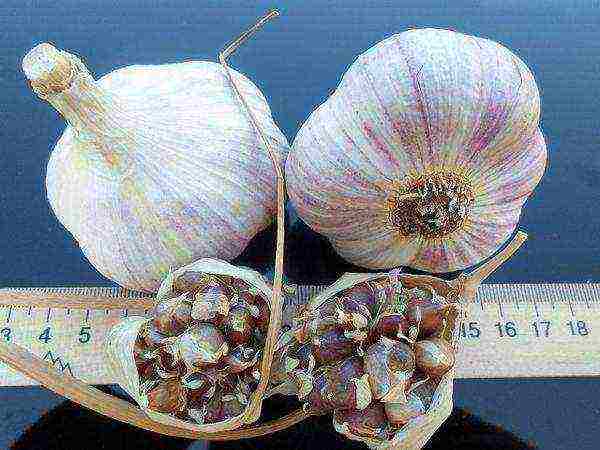
Cultivation technology and features of sowing seeds in the country
Each planting date has its own individual characteristics regarding the work. But there are also general rules that should be followed regardless of the time factor:
- Before planting a vegetable, you must definitely calibrate, that is, to remove too small and somewhat diseased heads;
- The most common mistake many gardeners make is planting winter crops in the spring. In this case, you can get a crop, but it will not be as tasty and large as with an autumn planting;
- In order to get a guaranteed yield, you should purchase zoned varieties... It is also worthwhile to study in advance all the characteristics, technology, how to sow and needs;
- Once every 3 years, you need to carry out rejuvenation of the variety, that is, instead of the teeth, bulbs will be used as planting material, from which one-toothed teeth ripen in the first season. The resulting crop is used for planting the next year. As a result of such work, the garlic is renewed;
- In order to harvest a high-quality crop, the deadlines must not be missed. You can identify them by the arrow that should burst. Bulbs should also form;
- For a richer harvest, garlic feathers should be picked in a timely manner.

In the fall, you cannot plant the teeth too early so that they do not germinate ahead of time, in the spring you cannot delay planting, because then the heads may not have time to mature before the onset of cold weather.
Rules for planting garlic in open ground
In order for the cultivation to end with success, you need to correctly carry out the planting work. It is also very important to competently care for the plantings and perform the necessary work in a timely manner.
Preparing seedling cloves
In order to get friendly shoots, which will subsequently bring a good harvest, you need to work hard and properly process the planting material:
-
- Well-dried garlic heads are divided into cloves without damaging the dry scales;
- Then spend calibrationselecting large and healthy slices;
- Before spring planting, the cloves can be stimulated to a faster emergence of roots, for this planting material wrapped in a damp cloth and put in the refrigerator for several days;
- Before planting the teeth in the ground, they must be prepared.
There are three ways to carry out processing:
-
- The slices are soaked in warm water for 10-12 hours;
- For these purposes, table salt is also well suited, which is diluted in water (3 tablespoons per 5 liters).This procedure is carried out for several minutes;
- Another way would be chemicals that have a stimulating effect.
- The last important procedure will be disinfection... To do this, the teeth are immersed in a solution of copper sulfate for 1-2 minutes (1 tablespoon per 10 liters of water).
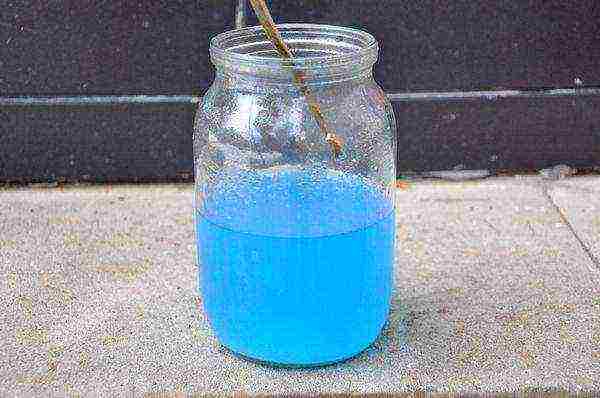
Site selection and soil preparation
Garlic is quite capricious about the choice of soil and planting sites. When preparing a site, you should remember all the preferences of this culture:
- in the best way the vegetable takes root on loamy and chernozem soils with neutral acidity;
- the place should be sunny and open;
- it is not recommended to plant garlic where onions, potatoes and tomatoes grew before it. Desirable precursors include cabbage, legumes, courgettes and cucumbers.
For spring planting, soil preparation is carried out in the fall, and for autumn planting a month before work. This procedure includes deep digging, loosening, removing weeds and stones.
In order to balance the composition of the soil, clay and sandy soil is diluted with peat, and peat loam.
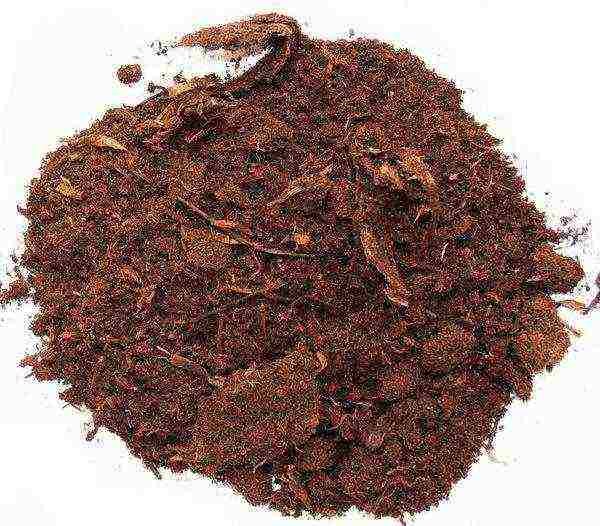
In order to get a rich harvest, the soil needs to be enrich... The following fertilizers are applied to one square meter of soil:
- 1 bucket of humus or rotted manure;
- 1 bucket of compost;
- 1 cup dolomite flour;
- 1 tablespoon superphosphate;
- 1 tablespoon of nitrophosphate.
The final part will be the disinfection of the plantings, during which the beds are watered with copper sulfate or potassium permanganate solution. Experienced gardeners recommend covering the ridges with foil until the work is done.
Step-by-step instructions and at what depth to plant
The vegetable is planted in rows, the distance between which should be equal 20-25 centimeters... The distance between individual teeth will depend on their size, on average this figure is 10 centimeters.
The teeth deepen strictly vertical... In the spring, the embedment depth will be 5-6 centimeters. In the fall, this figure should be increased to 10 centimeters. This is necessary in order to protect the planting material from freezing.
Care
Caring for the garlic after planting will consist of timely loosening and cleaning the soil from weeds... Also, do not forget about watering. During the growing season, moisture should be applied abundantly.
Watering is reduced to a moderate amount when the fruit begins to form, because with an excess of moisture, garlic can be susceptible to various diseases. In rainy weather, watering should be reduced. Moisture application is stopped 2 weeks before harvest.
In addition to watering, garlic needs regular feeding:
- 1 time in 10 days the soil is watered with a solution of phosphorus and potash fertilizers;
- At the beginning of the growing season and after the formation of the head, the plants are fertilized with infusion of mullein or chicken droppings. 1 kilogram of fertilizer is diluted in 10 liters of water and infused for several days. After the end of fermentation, 1 liter of top dressing is diluted with 10 liters of water.

How to transplant garlic planted before winter in the spring
It often happens that after the autumn planting of garlic, the gardener's plans change dramatically and the beds have to be transplanted to a new place.Many sources do not recommend carrying out such a procedure, because it can damage the root system of plants and destroy them.
But if work is necessary, then the planting is transferred together with a large earthy clod... In this case, the losses will be minimal, but in any case, a smaller yield should be expected.
You can plant garlic in spring and autumn. The specific timeframe for the completion of the work will depend on the desired result. The key to successful work will be compliance with all the above rules.

